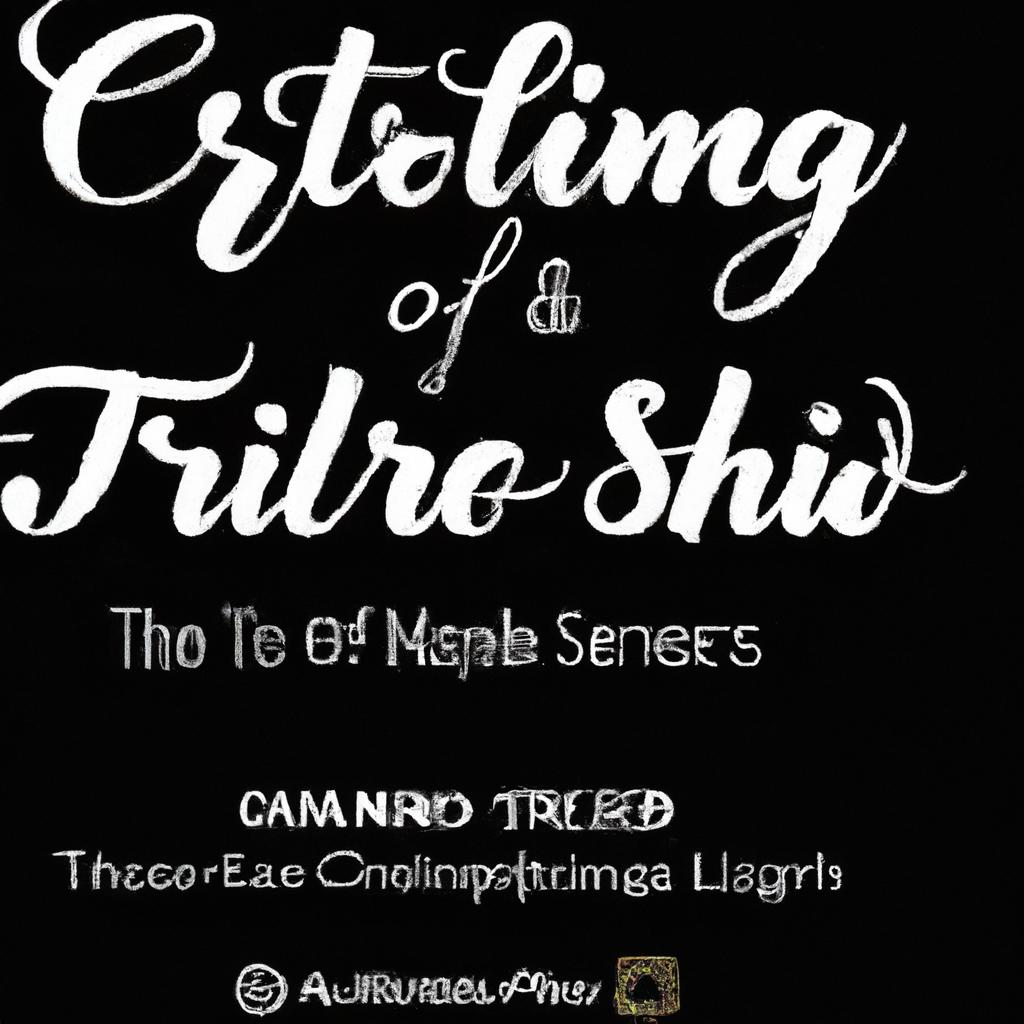
The Art of Calligraphy: Tools, Tips, and Techniques
In a world inundated with technology and digital communication, the alluring elegance of calligraphy remains a time-honored art form that continues to captivate and inspire. With its rich history dating back centuries, calligraphy is not just a form of writing, but a true embodiment of creativity and precision. From the delicate strokes of a quill pen to the graceful loops of a brush, the tools, tips, and techniques of calligraphy offer a world of beauty waiting to be explored. Join us as we delve into the enchanting realm of calligraphy and uncover the secrets behind this mesmerizing craft.
Table of Contents
- Tools of the Trade
- Exploring Different Calligraphy Pens and Brushes
- Mastering Calligraphy Techniques
- Tips for Practicing and Perfecting Your Craft
- Q&A
- Closing Remarks
Tools of the Trade
Calligraphy is an ancient art form that requires the use of specific tools to achieve beautiful and precise lettering. One of the most essential tools for calligraphy is the calligraphy pen, which comes in a variety of styles such as dip pens, fountain pens, and brush pens. Each type of pen offers a unique writing experience and can create different styles of lettering. Another important tool is calligraphy paper, which is smooth and allows the ink to flow easily without feathering or bleeding.
Additionally, ink is a crucial component of calligraphy, with options ranging from traditional black ink to a rainbow of colors. Different inks have varying levels of opacity and flow, so it’s essential to experiment and find the one that works best for your style. Finally, guidelines are helpful tools for beginners to ensure consistent letter sizes and spacing. These can be either pre-printed on paper or drawn using a ruler and pencil.
Exploring Different Calligraphy Pens and Brushes
When it comes to calligraphy, the tools you use can make a huge difference in the final result of your work. From traditional fountain pens to modern brush pens, there are countless options available for calligraphers of all levels. One popular choice for beginners is the Pilot Parallel Pen, which offers interchangeable nibs for different line widths.
<p>For more experienced calligraphers looking to add a unique touch to their work, experimenting with different brushes can be a game-changer. The <strong>Pentel Arts Aquash Water Brush</strong> is a versatile option that can be filled with water or ink for a range of effects. By trying out a variety of pens and brushes, you can discover new techniques and styles to elevate your calligraphy practice.</p>
Mastering Calligraphy Techniques
When it comes to , having the right tools is essential. Invest in quality calligraphy pens, nibs, ink, and paper to ensure smooth and precise strokes. Experiment with different types of nibs to find the one that works best for you. Practice regularly to improve your skills and develop your own unique style.
Here are some tips to help you perfect your calligraphy:
- Hold the pen at a consistent angle for uniform lettering
- Practice using varying amounts of pressure for thick and thin lines
- Study different calligraphy styles and incorporate elements into your own work
- Experiment with different ink colors and paper textures to add visual interest
Tips for Practicing and Perfecting Your Craft
When it comes to mastering the art of calligraphy, having the right tools is essential. Investing in quality pens, nibs, and ink can make a world of difference in your work. Experiment with different types of tools to find what works best for you and don’t be afraid to splurge on items that will enhance your craft.
- Explore different calligraphy styles, such as modern, traditional, or brush lettering
- Practice consistently to improve muscle memory and gain better control over your strokes
- Study the work of seasoned calligraphers for inspiration and techniques
- Attend workshops or classes to learn new skills and receive feedback from experts
Technique plays a crucial role in calligraphy, so be sure to pay attention to your posture, grip, and letter formation. Practice your strokes and shapes regularly to develop a steady hand and fluid movement. Remember, perfecting your craft takes time and dedication, so be patient with yourself and enjoy the process of growth and improvement.
Q&A
Q: What is calligraphy?
A: Calligraphy is a visual art form of writing that focuses on the aesthetic appearance of characters and symbols.
Q: What are some essential tools for calligraphy?
A: Some essential tools for calligraphy include a pen holder, nibs, ink, paper, and guidelines to help maintain consistent spacing and alignment.
Q: What are some important tips for beginners interested in learning calligraphy?
A: Some important tips for beginners include practicing regularly, experimenting with different styles and techniques, and being patient with yourself as you develop your skills.
Q: How can someone improve their calligraphy skills?
A: To improve calligraphy skills, it is important to study different fonts and styles, seek feedback from more experienced calligraphers, and continue practicing to build muscle memory.
Q: Are there any common mistakes to avoid in calligraphy?
A: Some common mistakes to avoid in calligraphy include applying too much pressure, rushing through a piece, and neglecting proper posture and hand positioning.
Q: What makes calligraphy different from regular handwriting?
A: Calligraphy differs from regular handwriting in that it is more focused on the visual presentation of the characters, often incorporating flourishes, embellishments, and different styles of lettering.
Closing Remarks
As we have seen, the art of calligraphy is a beautiful and intricate practice that requires patience, dedication, and the proper tools. By mastering the techniques and incorporating your own personal style, you can create stunning works of art that showcase the beauty of handwritten script. So, pick up your pen, experiment with different tools, and let your creativity flow onto the page. Embrace the art of calligraphy and watch as your skills flourish and evolve. Happy writing!

